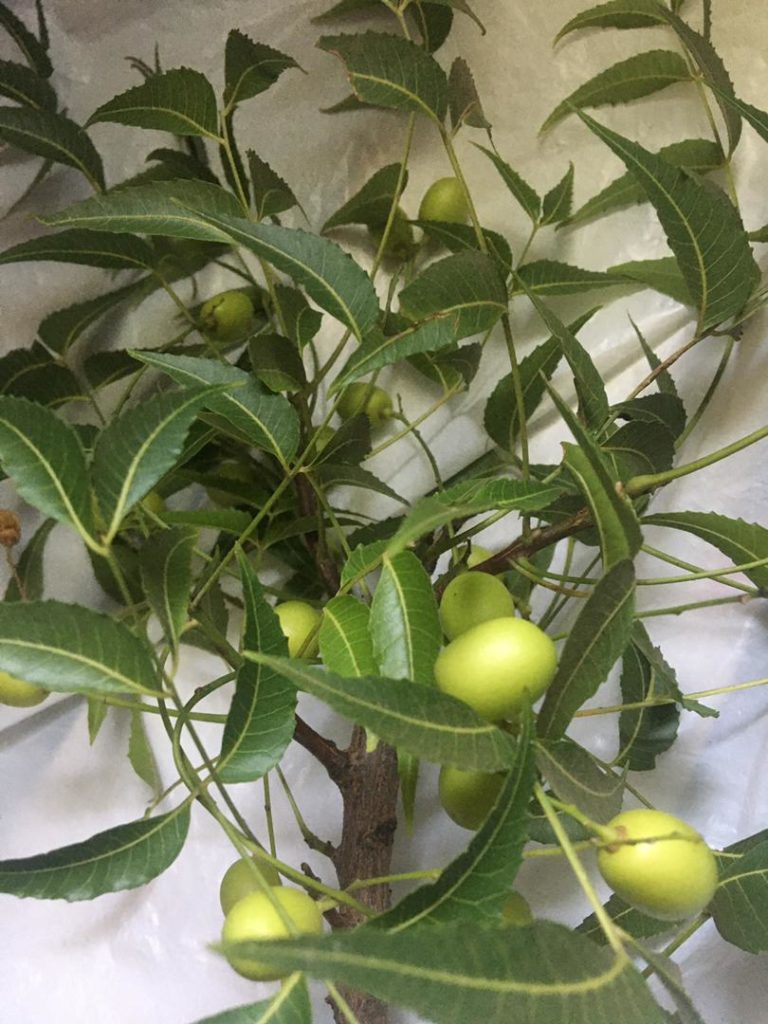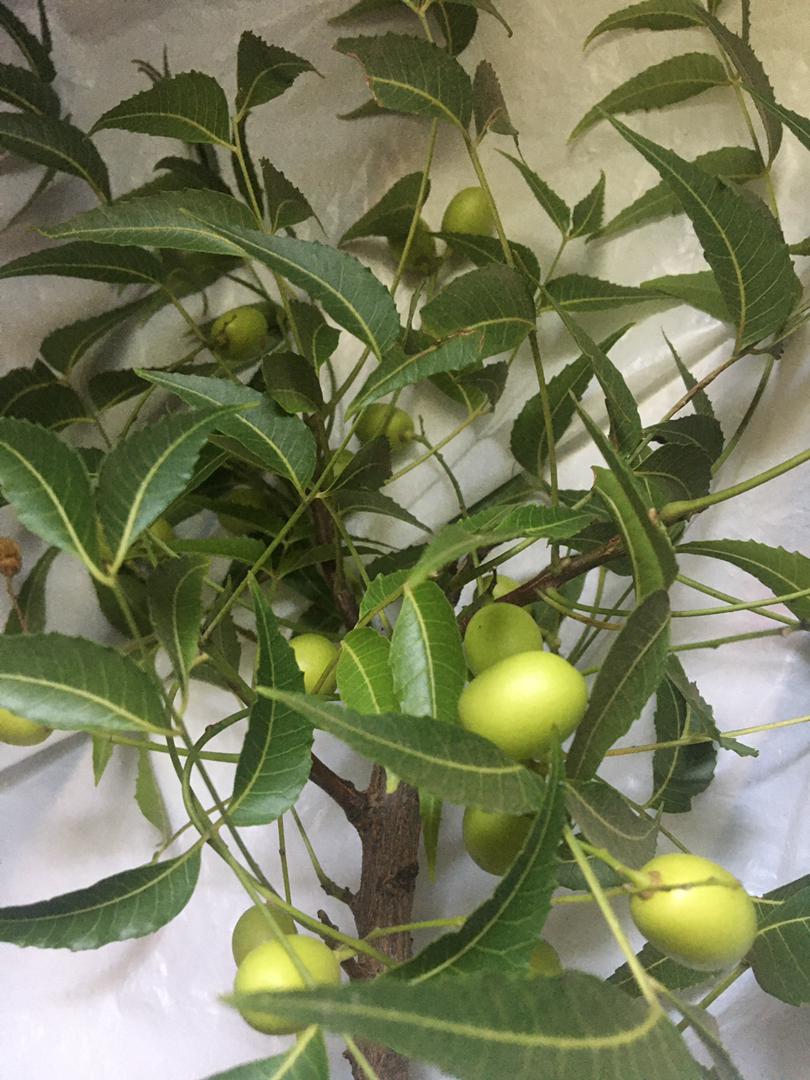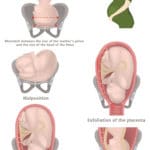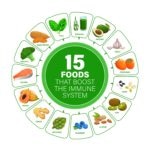Neem (dongoyaro leaf) with the botanical name- Azadiratcha indica is known worldwide due to its numerous medicinal properties. Neem products are used widely in Southeastern Asia especially India where the tree is commonly found. Neem is also known as India lilac.
Popularly known as Dogoyaro in Nigeria, neem leaf is gotten from the neem tree which is mostly found in the Northern parts of Nigeria. This is one tree that is medicinal in its entirety all parts have important uses particularly in the field of medicine.
The seed, bark, stem, leaves, flower and even the sap which forms neem gum are all useful parts of the tree due to their various medicinal properties.
How do you get neem oil?

dongoyaro leaf 
neem tree
Neem fruit is green to yellow in colour, it has a fleshy part and an inner kernel (seed) from which the neem oil is derived. Neem oil smells like garlic and has high azadiratchin content which is harmful to insects and pests. This makes neem oil a potent insecticide and pesticide. It is however harmful to humans as it may cause irritation to the eyes and skin with contact. When ingested in its raw form, it may irritate the stomach. Neem oil is banned in the UK due to its toxic effects to humans and animals such as cats.
Uses of the Neem leaf
Neem leaf have been used for neem tea and neem powder. In some parts of Nigeria, the juice from neem leaf is extracted and ingested as an antimalarial. Neem powder is gotten by drying the leaf and grinding or blending the dry leaves. Neem tea and neem powder have antioxidant and anti-inflammatory properties which make them useful pharmaceutical products.
Neem bark
The bark of the neem tree has been used for many years in herbal mixtures for the treatment of fever and many ailments like malaria and peptic ulcers.
Neem gum
The neem tree sap is a yellowish to brown coloured gummy discharge from the bark of the tree and has been used in commercial quantities in the food and drug industry after modification. Modification of neem gum for use makes it easier to preserve.
It is a useful pharmaceutical product that has been used as a thickening or binding agent, film coating of drugs and making drug capsules.
Neem flower
Neem tree buds and produces the flower before the fruit sprouts. Just like the leaves, neem flower is also processed to get neem powder and it has similar medicinal properties.
How does neem leaf taste?
It is the most bitter substance I ever had to taste. Unlike bitter leaf, it doesn’t have a sweet after taste when you drink water. The bitter taste lingers until you eat something else.
Specific medicinal properties of neem
Anti-inflammatory: Its anti-inflammatory property is attributable to certain chemical that it contains such as nimbin (triterpene). Nimbin produces antioxidants which are substances that reduce levels of harmful chemicals in the body that damages body cells. Hence it reduces inflammation in virtually every organ system.It also contains flavonoids, epoxy-azadradione and eicosanoid which help to reduce inflammation. Epoxy-azadradione specifically inhibits the release of chemicals that cause inflammation (pro-inflammatory cytokines).
Anti-microbial: Various studies have shown that neem restricts the growth of microorganisms in the body including bacteria, viruses and parasites. Azadirachtin content of neem confers these antimicrobial properties.
Anti-pyretic: Neem helps to reduce or stop fever because it contains chemicals that stops the body from producing chemicals that cause fever. Eicosanoid inhibits cyclo-oxygenase which is one of the chemicals that when released, causes fever and pains.
Anti-histamine: Nimbin in neem leaf and seed inhibits the production of histamine which is a substance that is released during allergic reactions. It produces itching and increased secretions and swellings in different parts of the body.
Insecticide: Azadirachtin restricts the growth of certain insects and neem seed has a high content of this substance. Hence it is used in farms against pests and insects that may destroy crops. This property makes neem seed extracts poisonous to animals and humans as it may cause some serious allergic reactions.
Spermicidal: Nimbin in neem reduces sperm cell motility and sperm count. It restricts sperm production and movement. Hence it may be used as a contraceptive and should be avoided in people who are trying to conceive.
Effect of neem on Diabetes mellitus
Extracts of neem leaf and bark have been found to be helpful in blood glucose control in diabetes mellitus. Neem reduces the uptake of glucose into the cells thereby reducing blood glucose levels. In addition, it reduces intestinal enzymes that helps breakdown of food thereby reducing glucose that is available for uptake into the cells. Neem also improves islet cell function thereby increasing insulin production. Islet cells are cells in the pancreas which produce chemicals that modulate blood glucose levels such as insulin.
Effects of Neem on blood pressure
Neem exerts its antihypertensive effects by blocking calcium ion channels which reduces the entrance of calcium into the cells. Calcium in the cells causes blood vessels to squeeze and results in an increase in blood pressure. Blocking of this channel therefore causes the blood vessels to open up thereby causing a sudden drop in blood pressure. In addition, neem increases nitric oxide levels which also leads to opening up (dilatation) of blood vessels thereby reducing blood pressure.
Effects of neem on fertility
Neem has a negative effect on fertility in both male and females. It reduces the movement of sperm cells, kills them off and also reduces production of new sperm cells. In females, neem may inhibit ovulation as well as implantation of embryos.
Toxic effects of neem
Hepatotoxic: Neem is toxic to the liver and may be a cause of inflammation of the liver- hepatitis.
Allergen- Neem products may cause both systemic and local allergic reactions when taken orally or applied to the skin or scalp.
A lot of research is still ongoing on the pharmaceutical uses of different parts of the neem tree. However, most of these are animal studies due to the ethical issues associated with carrying out experimental studies in humans. A few human studies are available but have mostly controversial results.
In conclusion, the various chemicals in neem exert their effects at specific dosages which are measured based on the weight.
Furthermore, these effects are exerted when neem products are administered via specific routes such as orally, topically (i.e. applied on the skin) or through injections (either intravenous or intramuscular).
Hence, the administration of neem products for any ailment should be individualized and the specific constituent for the particular ailment extracted and administered through the appropriate route as found by medical research.





